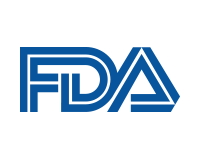United States Department of Health and Human Services

United States Food and Drug Administration: Publications
ORCID IDs
http://orcid.org/0000-0003-0589-2207
Date of this Version
2020
Document Type
Article
Citation
Agribusiness. 2020;36:347–362.
wileyonlinelibrary.com/journal/agr
U.S. government works are not subject to copyright.
Abstract
Using 1998–2008 data collected by the Centers for Disease Control and Prevention on foodborne illnesses and outbreaks, we examine the economic impact of the United States Department of Agriculture's proposed and final rules to reduce the incidence of Listeria monocytogenes (Lm) in ready‐to‐ eat meat and poultry products. Using a difference‐in‐ differences approach, we find that these rules together reduced meat‐related Lm illnesses by about 60 per year, which we attribute to reductions in both the number and average size of meat‐related Lm outbreaks. We then monetize this illness reduction using an underreporting and underdiagnosis multiplier of 2.3 and an estimate of the mean cost of a Lm illness of $1.5 million and find that these rules generated about $208 million per year in cost savings, which compares favorably to the rules’ estimated annual cost of roughly $22 million.
Included in
Dietetics and Clinical Nutrition Commons, Health and Medical Administration Commons, Health Services Administration Commons, Pharmaceutical Preparations Commons, Pharmacy Administration, Policy and Regulation Commons


Comments
U.S. government works are not subject to copyright.